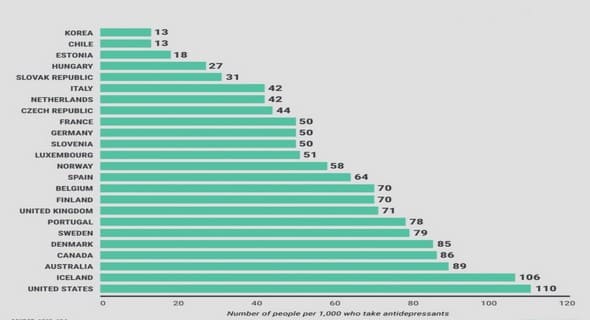(Downloads - 0)
For more info about our services contact : help@bestpfe.com
Table of contents
Chapter 1: Introduction
1.1 Motivation
1.2 État de l’art
1.2.1 Formulation mathématique de réseaux et réseaux multicouches
1.2.2 Quelques modèles probabilistes pour graphes aléatoires
1.2.3 Modèles à espaces latents pour graphes aléatoires
1.2.4 Extensions du SBM aux réseaux multicouches et à des collections de réseaux
1.2.5 Techniques d’inférence et algorithmes
1.2.6 Sélection de modèle
1.2.7 Comparaison de clustering
1.2.8 Données manquantes et bruitées
1.3 Contributions de la thèse
1.3.1 Un modèle à blocs stochastiques pour les réseaux multiniveaux
1.3.2 Structures communes d’une collection de réseau
1.3.3 Estimation de la robustesse de réseaux d’interactions écologiques bipartites
1.3.4 Package R
Chapter 2: A Stochastic Block Model for the Analysis of Multilevel
2.1 Introduction
2.2 A multilevel stochastic block model
2.3 Statistical Inference
2.3.1 Variational method for maximum likelihood estimation
2.3.2 Model selection
2.4 Illustration on simulated data
2.4.1 Experimental design
2.4.2 Simulation results
2.4.3 Computational costs
2.5 Application to the multilevel network issued from a television programs trade fair
2.5.1 Context and Description of the data set
2.5.2 Statistical analysis
2.5.3 Analysis and comments
2.6 Discussion
2.A Proof of Proposition 2.1
2.B Proof of Proposition 2.2
2.C Details of the Variational EM
2.D Details of the ICL criterion
2.E Stochastic Block Model for Generalized Multilevel Network
2.E.1 Description of the generative model
2.E.2 Variational inference
2.F MLVSBM package Tutorial
2.F.1 Generic functions
2.F.2 Other useful output
2.G Hard to Infer Levels: Benefits of the Multilevel Modeling
2.G.1 Simulation Scenario
2.G.2 Results
Chapter 3: Joint inference of a collection of networks using a stochastic block model framework
3.1 Introduction
3.2 Data Motivation and the Stochastic Block Model
3.3 Joint Modeling of a Collection of Networks
3.3.1 A collection of i.i.d. SBM
3.3.2 A collection of networks with varying block sizes
3.3.3 A collection of networks with varying density (-colSBM)
3.3.4 Collection of networks with varying block sizes and density (-colSBM)
3.4 Likelihood and identifiability of the models
3.4.1 Log-likelihood expression
3.5 Variational estimation of the parameters
3.6 Model selection
3.6.1 Selecting the number of blocks Q
3.6.2 Testing common connectivity structure
3.7 Partition of networks according to their mesoscale structure
3.8 Simulation studies
3.8.1 Efficiency of the inference procedure
3.8.2 Capacity to distinguish -colSBM from iid-colSBM
3.8.3 Partition of networks
3.8.4 Finding finer block structures
3.9 Application to Food Webs
3.9.1 Joint analysis of 3 stream food webs
3.9.2 Partition of a collection of 67 predation networks
3.10 Discussion
3.A Proof of identifiability
3.B Details of the Model Selection when Allowing for Empty Blocks
3.C Partition of Food Webs with colSBM
3.D Analyze of advice networks
3.D.1 Presentation of the advice networks
3.D.2 Pairwise analysis of the advice networks
3.D.3 Looking for larger collections
3.D.4 Using dyad prediction to quantify the link between networks
3.D.5 Conclusion
Chapter 4: Estimating the robustness of a bipartite ecological networks through a probabilistic modeling
4.1 Introduction
4.2 Robustness of bipartite ecological networks
4.3 Bipartite Stochastic Block Model and related sequential extinctions
4.3.1 Probabilistic model on bipartite ecological networks
4.3.2 Extinction sequence distributions adapted to bipartite Block Models
4.4 Moments of the robustness statistic
4.4.1 Expectation
4.4.2 Variance
4.4.3 Illustration of the variability of the robustness function
4.5 Impact of the Network Structure on the Robustness
4.5.1 Analytical Properties
4.5.2 Analysis for Typical Structures
4.6 Analysis of a collection of observed bipartite ecological networks
4.6.1 Computation of the Robustness for the Web of Life Dataset
4.6.2 Correction for Partially Observed Networks
4.7 Discussion
4.A Proof for Section 4.4 (Moments of the robustness statistic)
4.B Comparing the robustness of bipartite ecological networks with different interaction types
4.B.1 Robustness and Analysis of the block model of the Web of Life dataset
4.B.2 Analyzing the link between richness, connectance and interaction type for empirical robustness
4.B.3 Normalized robustness
4.B.4 Examining if networks are more robust to plant or animal extinctions
Chapter 5: Conclusions et perspectives




